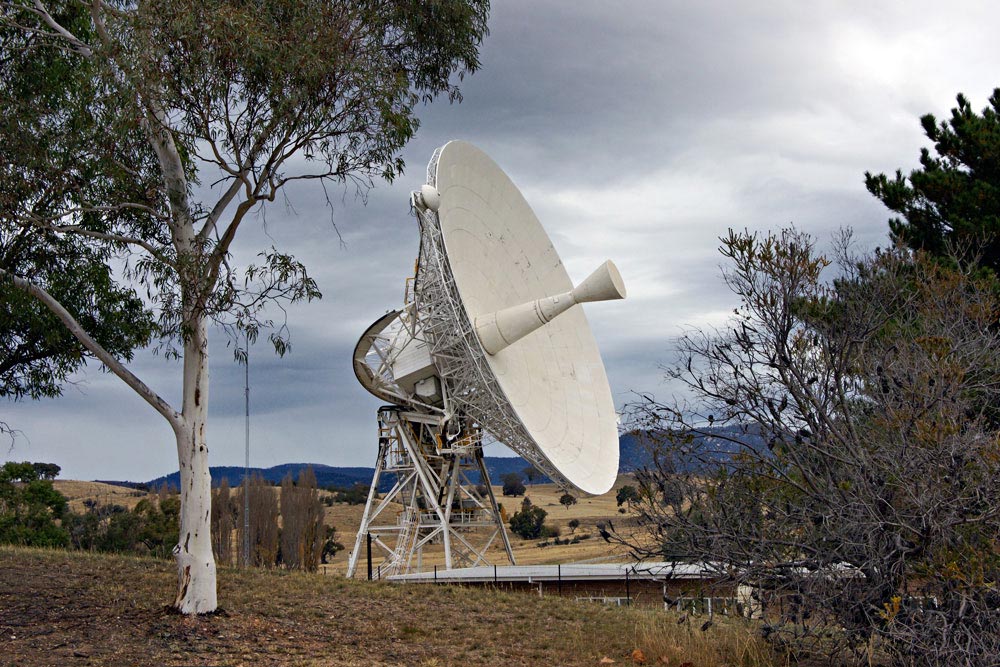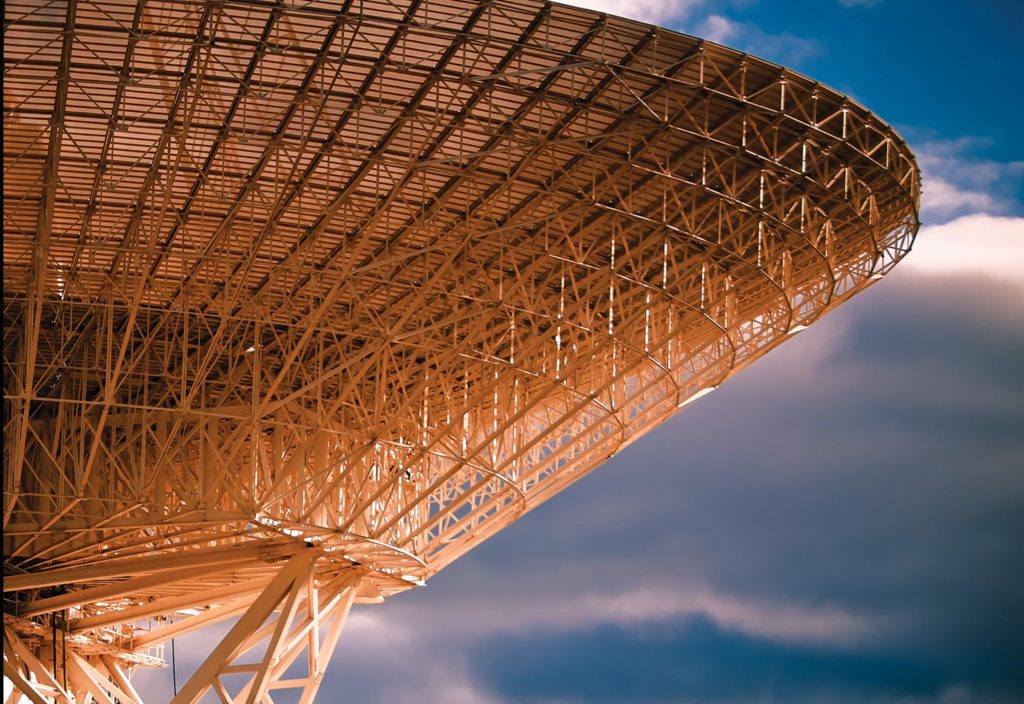Australia has punched above its weight in space exploration thanks to a talent for aeronautical and astronautical engineering.
Fifty years ago this year, families around the world gathered by television sets to witness history being made.
On 21 July 1969, Apollo 11 astronauts were to set foot on the moon, and the entire event was to be broadcast to wide-eyed TV audiences.
NASA had commissioned several radio telescopes to capture and relay the action. Only one — at Goldstone in California — was in the United States.
Two were in Australia: one in Parkes, NSW, and one in Honeysuckle Creek, ACT. Another was in a small village outside Madrid, Spain.
Footage of the first eight minutes of the moonwalk came from several radio telescopes including both Australian ones. The first moments arrived through the Honeysuckle Creek dish.

For the remainder of the broadcast — about two-and-a-half hours of footage — only Parkes signals were used. They were sent to Houston via Honeysuckle Creek.
At the time, few Australians realised their own nation’s level of expertise in space-related engineering and science. The role of the Parkes dish in the moon landing broadcast remained unknown to many until it was immortalised with a highly fictionalised version of the story in the 2000 film The Dish.
But around the globe, Australian talent was earning respect in all the right places.
The sky is not the limit
Thomas O. Paine, who at the time of the Apollo 11 landing was the Administrator of NASA, sent a message to Malcolm Fraser, then the Federal Minister for Education and Science.
It read: “I wish to express my sincere appreciation to you and the Commonwealth Scientific and Industrial Research Organisation for making available the Parkes facility during the Apollo 11 mission. Its participation, and spectacular performance, provided the entire world with a chance to experience, with astronauts Armstrong and Aldrin, this historic event”.
But that was not the only involvement Australia had in the early days of space exploration.
After its establishment in 1947, Woomera, in the South Australian outback, held numerous launches of rockets for both weapons testing and space research.
And it is a little-known fact that, in 1967, Australia became just the third country, after the US and Russia, to build and launch a satellite into orbit from its own territory, when the Weapons Research Establishment Satellite (WRESAT) was sent into space from Woomera.
Australia’s involvement in space quietened down a little in the early 1970s when the Federal Government decided to direct funds towards other endeavours, but the space engineering bug was difficult to eradicate.
Australia’s radio telescopes and tracking stations were still used to assist US space missions and students at the University of Melbourne built the nation’s first amateur satellite, called Australia-OSCAR 5, which was launched from California.
Australians in space
Australian universities, particularly the University of Adelaide, began producing bumper crops of space pioneers decades ago.
Dr Andrew Thomas, the first Australian-born astronaut, graduated from the University of Adelaide with a degree (1973) and PhD (1978) in mechanical engineering.
He would do four space flights for 177 total days in space, including four months in zero gravity in the Mir space station.
Graduating from the same university, also with a degree and PhD in mechanical engineering, was Dr Kimberley Clayfield, now Executive Manager Space Sciences and Technology at the CSIRO.
Other Adelaide alumni include Dr Justin Hardi, the Group Leader for Combustion Dynamics at the German Aerospace Centre’s Institute of Space Propulsion, and Andrea Boyd, an International Space Station Flight Operations Engineer based at the European Astronaut Centre in Germany.
To infinity… and beyond!
Today, Australia’s involvement in space exploration is stronger than ever.
South Australia provided the landing site for Hayabusa, a Japanese unmanned spacecraft that made history when it returned to Earth after collecting a sample from asteroid Itokawa.
The 2012 landing on Mars of NASA’s car-sized robotic rover Curiosity — a process described as “seven minutes of terror”, by NASA staff — had signals fed via Australia’s Tidbinbilla tracking station. Tidbinbilla, in fact, is one of three main stations in the world that controls satellite locations.
And in 2017 the Australian Government announced the formation of the Australian Space Agency. It promises a bright future for those who wish their engineering careers to go above and beyond.
This article originally appeared as “Outback to orbit” in the April 2019 issue of create magazine.
